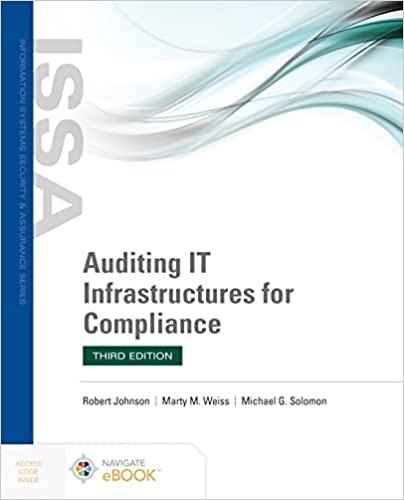Question
1. A company issues $400,000 of 8%, 10-year bonds dated on January 1, 2005, that mature on December 31, 2014, and pay interest semiannually on
1. A company issues $400,000 of 8%, 10-year bonds dated on January 1, 2005, that mature on December 31, 2014, and pay interest semiannually on each June 30 and December 31. What entry should be made on December 31, 2005?
A. Debit Bond Interest Expense $16,000; Credit Bond Interest Payable $16,000
B. None of the above
C. Debit Bond Interest Expense $32,000; Credit Cash $32,000
D. Debit Bond Interest Expense $32,000; Credit Bond Interest Payable $32,000
E. Debit Bond Interest Expense $16,000; Credit Cash $16,000
2. Which is a disadvantage of issuing bonds?
A. None of the above
B. Bonds can increase return on equity
C. The interest on bonds is tax-deductible
D. Bonds do not affect stockholder control
E. Bonds require payment of periodic interest and maturity value
3. The straight-line method of amortizing bond discounts and premiums results in which of the following?
A. All of the above
B. None of the above
C. A debit is made to interest expense when a discount is amortized and credited to interest expense when a premium is amortized.
D. An equal portion of bond interest expense is charged to each period
E. The discount or premium account is reduced to zero by the end of the bond's life
4.

Step by Step Solution
There are 3 Steps involved in it
Step: 1

Get Instant Access to Expert-Tailored Solutions
See step-by-step solutions with expert insights and AI powered tools for academic success
Step: 2

Step: 3

Ace Your Homework with AI
Get the answers you need in no time with our AI-driven, step-by-step assistance
Get Started


